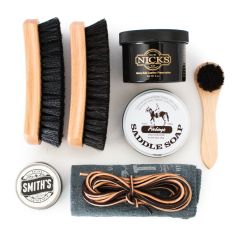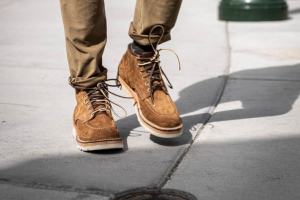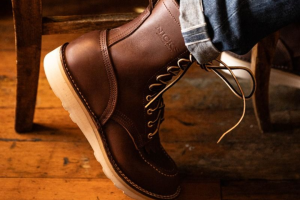How To Clean Leather Boots
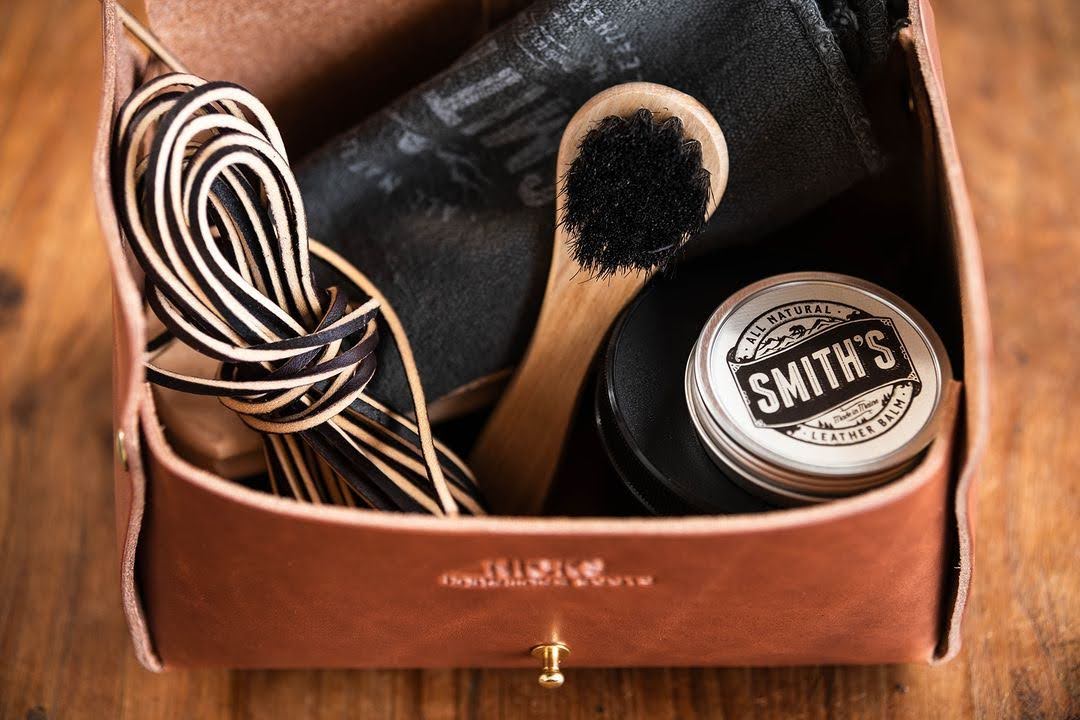
Key Takeaways:
- Proper Cleaning Tools: Utilize a boot brush and microfiber cloths to protect the leather from scratches during the cleaning process.
- Regular Conditioning and Waterproofing: Apply leather conditioner regularly and consider waterproofing to enhance protection and longevity.
- Careful Drying and Storage: Avoid direct heat for drying and store boots in a cool, dry place, using breathable materials for coverage.
At Nicks Boots, our decades-long commitment to quality craftsmanship is evident in every pair of boots we produce—boots built to stand the test of time and elements. As experts in leather care, we know that the longevity of your boots begins with proper maintenance.
Caring for leather boots properly not only extends their life but also keeps them looking their best. Whether you've invested in a pair of Nicks Boots for work or for everyday wear, understanding the right cleaning techniques is crucial.
In this piece, we'll walk you through the essential steps to clean your leather boots effectively, ensuring they continue to look great and last longer. From gathering the right tools to applying the best cleaning techniques, we cover all you need to maintain your boots’ pristine condition and comfort.


What You Need To Clean Leather Boots
Boot Brush
A boot brush is essential for the initial step of cleaning your leather boots. Use it to gently brush away surface dirt, dust, and mud that can scratch or embed in the leather over time. The soft bristles are specially designed to be tough on debris while being gentle on leather, ensuring your boots don't get damaged during the cleaning process.
Microfiber Cloth
Microfiber cloths are perfect for applying leather cleaner and for the final buffing phase. They are soft, highly absorbent, and non-abrasive, making them ideal for working with delicate materials like leather. Use the cloth to apply a small amount of cleaner and then again to polish the boots after conditioning, achieving a high shine without scratching the surface.
Leather Cleaner
Select a leather cleaner that is specifically formulated for use on leather to avoid damaging the boots. This type of cleaner helps remove built-up dirt and grime without stripping away the natural oils that keep the leather flexible. Apply the cleaner sparingly with a microfiber cloth, working in small sections to ensure thorough coverage without saturating the leather.
Leather Conditioner
After cleaning, applying a leather conditioner is crucial to restore moisture and prevent the leather from drying out and cracking. Choose a conditioner that matches the type of leather of your boots to ensure compatibility. Lightly apply with a clean microfiber cloth, massaging the conditioner into the leather to nourish and rejuvenate it.
Waterproofing Agent
Consider using a waterproofing agent if you frequently expose your boots to wet conditions. This agent creates a barrier that repels water, oils, and stains, extending the life and appearance of your leather boots. Apply according to the manufacturer's instructions after the boots are cleaned and conditioned, ensuring even coverage for effective protection.
A Small Bowl Of Water
Keep a small bowl of lukewarm water handy to dilute the leather cleaner if necessary. The water can also be used to lightly dampen your microfiber cloth before applying the cleaner, which helps in spreading the cleaner more evenly without over-applying it. Ensure the water is not too hot or cold to avoid shocking the leather, which can cause it to harden or shrink.
Keep your boots looking great and lasting longer with the right care products from Nicks Boots. Browse our selection of premium leather care accessories and find everything you need to clean, condition, and protect your footwear. Shop now and give your leather boots the care they deserve!
Step-By-Step Guide To Cleaning Leather Boots
- Prepare Your Cleaning Area - Before you begin, set up a clean, flat surface in a well-ventilated area to work on your boots. Lay down some newspaper or a towel to protect the surface from any spills or stains. This preparation ensures that you can clean your boots thoroughly without worrying about making a mess.
- Remove Laces And Initial Dirt Removal - Start by removing the laces to ensure easy access to all parts of the boots, including the tongue and deep crevices. Use your boot brush to gently remove loose dirt, dust, and debris from the surface of the boots. This step is crucial for preventing any surface dirt from becoming embedded into the leather during the wet cleaning process.
- Apply Leather Cleaner - Dampen a microfiber cloth with a small amount of water and apply a suitable leather cleaner. Gently rub the cleaner onto the leather in circular motions, focusing on one section at a time to ensure thorough cleaning. Be careful not to oversaturate the leather, as excessive moisture can damage it.
- Wipe Off Cleaner And Dry - After cleaning each section, use a clean, dry microfiber cloth to wipe away any excess cleaner from the leather. Allow the boots to air-dry naturally in a cool, dry place away from direct heat or sunlight, which can cause the leather to crack or warp.
- Apply Leather Conditioner - Once the boots are completely dry, apply a small amount of leather conditioner with a fresh microfiber cloth. Work the conditioner into the leather using circular motions, similar to the cleaning step. This not only restores moisture but also enhances the leather’s flexibility and durability.
- Buff To A Shine And Waterproof (Optional) - After the conditioner has been absorbed, use another clean microfiber cloth to buff the boots to a shine. If desired, apply a waterproofing agent to help protect the boots against future moisture and dirt. Ensure the boots are completely dry before applying the waterproofing treatment.
- Re-lace And Final Inspection - Re-lace your boots once all treatments have been applied and the boots are fully dry. Perform a final inspection to ensure no areas have been missed and that the boots are ready for wear.
Tips For Drying And Storing Leather Boots After Cleaning
Proper Drying Techniques
After cleaning your leather boots, it's crucial to dry them correctly to prevent damage such as cracking or warping. Avoid exposing your boots to direct heat sources like radiators, hairdryers, or direct sunlight, as these can cause the leather to dry out too quickly and become brittle. Instead, allow them to air dry naturally in a well-ventilated area. Stuff the boots with newspaper or a shoe tree to help them maintain their shape as they dry. This method ensures even drying without deforming the leather.
Optimal Humidity Conditions
Leather boots should be dried and stored in an environment with moderate humidity. Too much humidity can encourage the growth of mold and mildew, while very dry air can cause the leather to crack. If you live in a particularly humid or dry climate, consider using a dehumidifier or humidifier in your storage area to maintain an optimal level of humidity. Keeping the humidity levels balanced helps preserve the leather's natural properties and extend the lifespan of your boots.
Storage Location And Arrangement
Choose a cool, dry place away from direct sunlight and heat sources for storing your leather boots. Sunlight can fade the color of the leather over time, and excessive heat can alter the shape and condition of the boots. Use a boot rack or maintain sufficient space between footwear to allow air circulation, which helps prevent any potential moisture buildup. Proper storage will not only keep your boots in prime condition but also make them readily accessible and organized.
Using The Right Protective Covers
To protect your leather boots from dust and other environmental elements, consider using breathable cloth bags or boot covers. Avoid using plastic bags, as these can trap moisture and lead to mildew growth. Cloth covers allow the leather to breathe while protecting it from dust, which keeps your boots ready to wear without additional cleaning. This method ensures your boots stay clean and protected, even over longer storage periods.
Periodic Condition Checks And Maintenance
Even when not in use, periodically check and maintain your leather boots. Every few months, take them out, inspect them for any issues, and apply a light coat of leather conditioner if they appear dry. This regular maintenance helps keep the leather supple and prevents deterioration, ensuring your boots are always in good condition and ready for use. Regular checks also allow you to address any issues before they become significant problems.
Common Mistakes To Avoid When Cleaning Leather Boots
Using Harsh Chemicals
One of the most detrimental mistakes in leather care is using cleaning agents that contain harsh chemicals or are not specifically designed for leather. These products can strip the leather of its natural oils, leading to dryness and cracking. Always opt for cleaners that are formulated for leather care to ensure that they gently clean without causing damage.
Over-Saturating The Leather
It's important to avoid drenching your leather boots in water or cleaner. Leather absorbs moisture, and too much water can saturate the material, causing it to become overly soft, lose its shape, or even rot. Instead, use a damp cloth to apply cleaner and wipe off the excess moisture promptly. This method ensures that your boots are cleaned effectively without becoming waterlogged.
Neglecting To Test Products
Before applying any new cleaner or conditioner to your leather boots, it’s crucial to test the product on a small, inconspicuous area first. This precaution helps avoid potential discoloration or damage to the visible parts of your boots. Allow the test spot to dry completely to accurately assess how the leather reacts to the product.
Skipping Regular Conditioning
Cleaning leather boots without following up with a conditioner is a common oversight that can shorten the lifespan of your footwear. Leather conditioner replenishes the natural oils lost during cleaning, keeping the leather supple and resistant to cracks. Make conditioning a regular part of your cleaning routine to maintain the quality and durability of your boots.
Rushing The Drying Process
Attempting to speed up the drying process with direct heat, such as from a hairdryer or placing boots near a heater, is a mistake that can irreversibly damage the leather. Instead, allow boots to dry naturally in a well-ventilated area away from direct heat sources. This slow drying process prevents the leather from becoming brittle and maintains its natural elasticity.
Maintaining Your Leather Boots: Long-Term Care Tips
Regular Cleaning And Conditioning
Consistent maintenance is key to the longevity of your leather boots. Clean and condition your boots regularly, depending on how often you wear them and the conditions they're exposed to. Use appropriate leather cleaners and conditioners to keep the leather nourished and prevent it from drying out and cracking. This routine care not only maintains the appearance but also enhances the durability of your boots.
Proper Storage
When not in use, store your leather boots in a cool, dry place away from direct sunlight and heat sources. Use shoe trees or stuff them with newspaper to help maintain their shape and absorb any excess moisture inside the boots. Good storage practices prevent deformation and creasing, keeping your boots ready for your next wear.
Moisture Management
Avoid letting your boots stay wet for long periods. If they do get wet, dry them slowly away from direct heat. Stuffing them with newspaper can help absorb the moisture quickly and maintain the shape of the boots. Regularly applying a waterproofing treatment can also provide an additional layer of protection against moisture, which is especially useful in harsh weather conditions.
Attend To Repairs Promptly
Monitor your boots for any signs of wear or damage, such as loose soles or tears in the leather. Address these issues promptly by taking them to a professional cobbler. Early repairs can prevent minor issues from becoming major, thereby extending the life of your boots significantly.
Rotate Your Boots
If you have multiple pairs of boots, rotate their usage. This practice gives each pair adequate time to air out and the leather to rest between wears. Rotating boots not only prevents excessive wear and tear on any single pair but also keeps all your footwear in better condition over time.
Final Thoughts
Caring for leather boots goes beyond basic cleaning; it's crucial for maintaining their durability and functionality. Nicks Boots provides a thorough guide on proper techniques to clean, condition, and waterproof leather boots, empowering owners to protect their investment effectively. This approach not only preserves the boots' aesthetic appeal but also enhances their longevity, making it a vital resource for individuals who see their footwear as a long-term commitment. By adopting these maintenance practices, users can ensure their boots withstand time and elements, reflecting true craftsmanship and care.
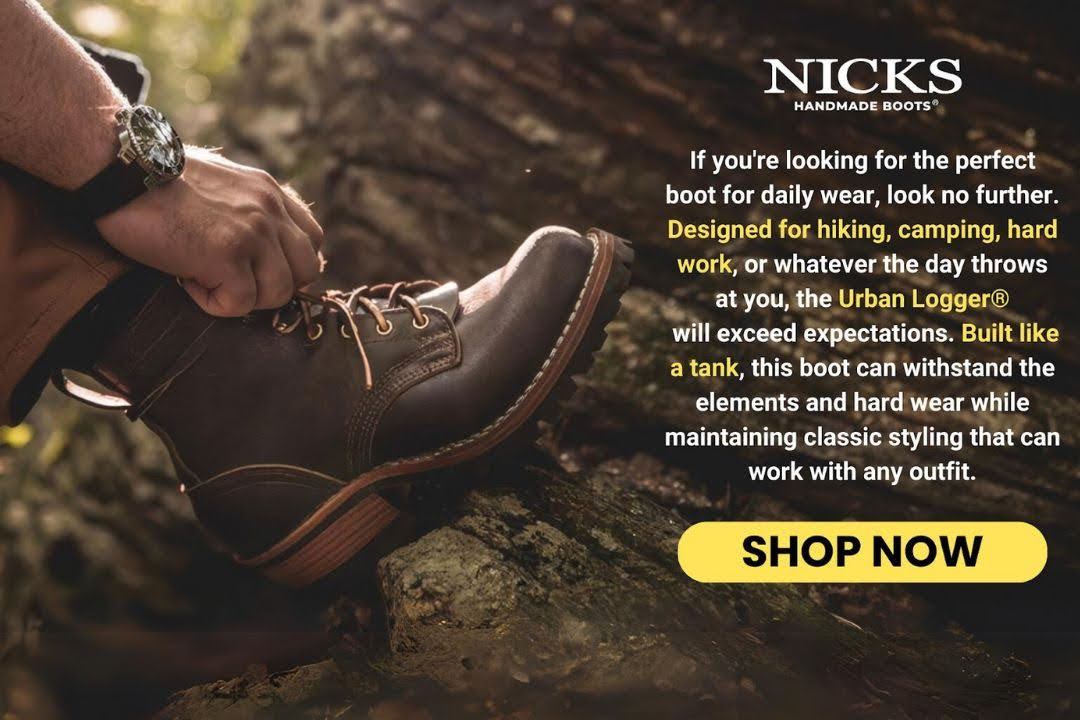

Read also:
Frequently Asked Questions About How To Clean Leather Boots
What type of brush should I use for cleaning leather boots?
Use a boot brush for initial cleaning to remove surface dirt and dust. This type of brush is gentle on leather, preventing potential scratches and damage.
Can I use any microfiber cloth for cleaning leather boots?
Yes, choose a microfiber cloth because it is soft, non-abrasive, and highly absorbent. It's perfect for applying cleaners and buffing boots without scratching the leather.
What should I look for in a leather cleaner?
Opt for a leather cleaner specifically formulated for leather goods. These cleaners effectively remove dirt and grime without stripping the leather of its natural oils.
How often should leather boots be conditioned?
Condition your leather boots every few months or after each cleaning, depending on use. Regular conditioning helps maintain the leather's moisture and prevents cracking.
Is waterproofing leather boots necessary?
Waterproofing is recommended if you frequently encounter wet conditions. It provides a protective barrier against moisture, extending the durability and appearance of your boots.
What's the best way to dilute leather cleaner?
To dilute leather cleaner, use a small bowl of lukewarm water. Lightly dampen your microfiber cloth before application to spread the cleaner evenly without oversaturating the leather.
How should leather boots be dried after cleaning?
After cleaning, allow your boots to air-dry naturally in a cool, dry place. Avoid direct heat sources, as they can cause the leather to crack or deform.
What precautions should be taken when storing leather boots?
Store your boots in a cool, dry location away from direct sunlight and heat sources. Use breathable cloth covers to protect them from dust while allowing air circulation.
How can I maintain the shape of my leather boots during storage?
Maintain the shape of your leather boots by using shoe trees or stuffing them with newspaper. This helps preserve their form and absorb any moisture.
What common mistakes should be avoided when cleaning leather boots?
Avoid using harsh chemicals or over-saturating your boots with water, as these can damage the leather. Always follow cleaning with conditioning and ensure proper drying to prevent deterioration.
